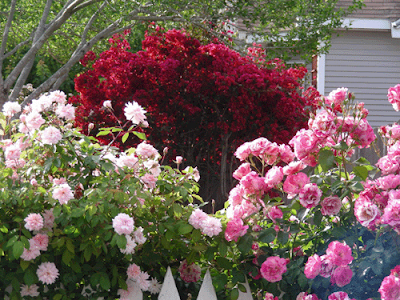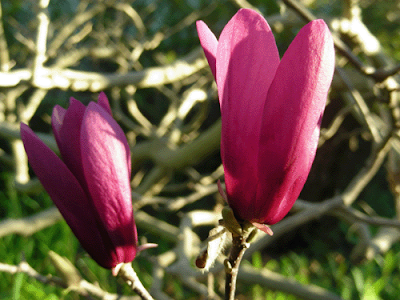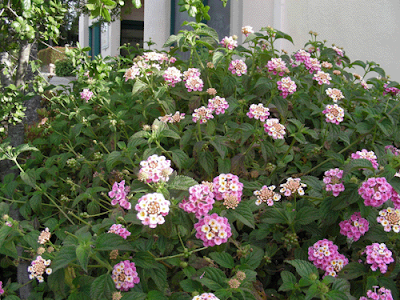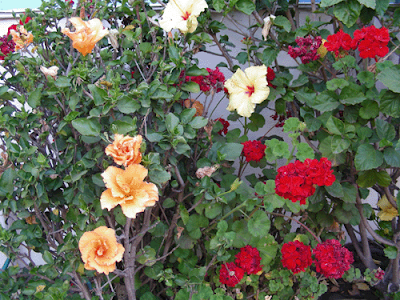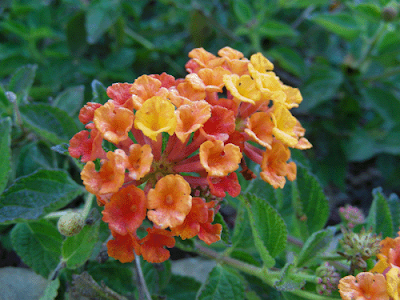
I’m not a geneticist. I don’t even play one on TV. I did pass my high school biology class (C-minus counts) and retained a pretty impressive archive of knowledge on the subject. As I recall, years before the dinosaurs arrived, ferocious Nucleotides stalked the primeval forests, warred with and eventually wiped out the friendly, but passive Peptides and became the dominant life form on the planet. One thing led to another and pretty soon, humans started buying plants at nurseries, paying no attention to the label in the container. That’s when the inexorable slip into stupid gardens started.
Sorry, didn’t mean to flaunt my expertise, but there’s a lesson lurking somewhere in this muck. Let me don my hip waders and see if I can pull out something worthwhile. Back to genetics…
Giving credit where credit is due, my TV partner, Owen Dell, reminds us that every plant has its “genetic destiny” (hereinafter abbreviated at GD) . Think about it…contained in the seed of a spreading chestnut tree are instructions to grow a certain way – height, width, branch structure, leaf shape, (ask the kids to leave the room – ready?) reproductive structures, you get the idea. So if we ignore the GD of the loverly
Castanea dentata, plant it in a window box and try to talk it into behaving like a Petunia… Well, you get the point.
Thesis statement – “Ignore a plant’s genetic destiny and you will be a sorely disappointed, hard working gardener.”
I’m a label reader. I was an avid reader of cereal box labels when I was a kid. Mayhap it was because the sight of my dad eating soft-boiled eggs made me want to wretch, so I’d build a wall adorned with the Trix rabbit, or Cocoa-Puffs toucan. Anyway, when I go to a nursery and pick up a plant I’m not familiar with, I read the label. Of course the skeptic in me cross-checks with other references, but hey, it’s a start. I want to know how tall and wide the plants gets, what kind of cultural conditions it needs, whether it snores. I want to be an informed consumer.
So how do you explain the following images without assuming that either a) the label was written in Arabic; b) the person read the label but thought they could sweet talk the plants into growing contrary to its GD; C) they looked forward to endless weekends of pruning, resulting in a hideous green box flanked with dead brown branches; or D) they ignored the label?

These delightful specimens are both in the genus Juniper – hearty evergreens (conifers) that will grow just about anywhere. The lower, mounding one is genetically programmed to achieve a height of 18 inches and a spread of about 8 feet across. “Cool, I think I’ll plant it a foot from my driveway and three feet from the next juniper! I’m sure if I talk to it nicely, it will behave as I instruct it. Maybe enroll it in plant obedience school.”

Dude – the bed is three freakin feet wide! Do you think there might be, oh, I don’t know, a few hundred attractive plants out there that will thrive in your climate with little or no care, look drop-dead-gorgeous, and grow to be a couple of feet tall and three feet wide?

Better yet, here’s its big cousin, Juniperus chinensis ‘Torulosa’ (Hollywood Twisted Juniper).
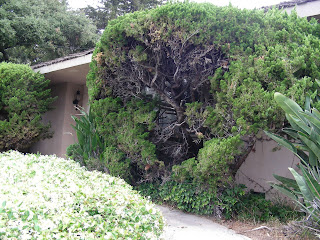
My book says, “15 feet tall by at least 8 feet wide. Attractive, twisted form; give plenty of room.”
“Sounds like a great plant. I have a two-foot wide bed under the eaves, next to a narrow walkway. Let’s take it home!”
Continuing my rant: Just as we have societal rules about what constitutes public decency, can’t we make some effort to end horticultural blight? Can I be deputized to arrest the perpetrators and initiate the gardening equivalent of the Darwin Awards? Can't these people be put out of
my misery? It's ugly, it's wasteful, it hurts the plants.
So do us all a favor. Read the label, ask a knowledgeable nursery employee (yes, there are many) for more information about the plant. Realize that short of taking night school classes in genetic engineering and messing with the DNA, the plant’s gonna do what the plant’s gonna do. Life would be SOOOOOOOOOOO much better for all of us if you’d pay attention to the genetic forces that are completely in command.
Gotta take some Tylenol. Later, skaters.




